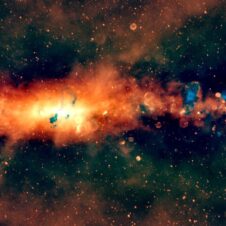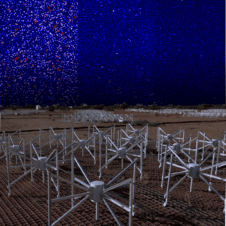Are dark matter and dark energy real? How UWA is teaming up with leading Australian and European institutions to unlock two of the most compelling mysteries in contemporary physics.
UWA DVCR Professor Robyn Owens has signed off on a $1.4m investment to support the operations of two major astronomical facilities—the Anglo-Australian Telescope (AAT) in New South Wales and the European Southern Observatory’s 4 Metre Optical Spectroscopic Telescope (4MOST) in northern Chile.

UWA DVCR Professor Robyn Owens signed off on a $1.4m investment to support participation in the 4MOST and AAT consortiums.

The 4MOST upgrade of the VISTA telescope will make it the world’s most powerful system for measuring galaxy redshifts. Credit: G. Hüdepohl (atacamaphoto.com)/ESO

The Anglo-Australian Telescope has a mirror 3.9 m in diameter, which makes it the largest optical (visible light) telescope in Australia. Credit: Ángel R. López Sánchez, Australian Astronomical Observatory
Together these facilities, and the surveys they conduct, will provide detailed measurements of the 3D distribution of millions of galaxies, directly supporting the science programs of upcoming NASA and ESA space missions, as well as helping to lift the lid on arguably the most compelling mysteries in physics today—What are dark matter and dark energy?
Dark matter cannot be seen directly but is thought to account for roughly 27 per cent of the Universe, while ordinary matter makes up just 5 per cent, and the remaining 68 per cent is attributed to dark energy.
Although dark matter itself is invisible, we can see its gravitational effect through the creation of strongly clustered patterns and groupings in the galaxy distribution. Without it, galaxies would be more uniformly distributed throughout the Universe and the lace-like structure less apparent. Conversely, on the very largest scales, dark energy drives galaxies apart, opposing the influence of the dark matter and helping to create dark voids or large gaps in the galaxy distribution.
Within these international consortiums, UWA will head up two studies; the DEVILS survey (led by Dr Luke Davies on the AAT) and the WAVES survey (led by Professor Simon Driver on 4MOST). These studies will pursue two new avenues. Firstly, they will investigate how the patterns in the galaxy distribution have evolved over the past eight billion years, and secondly, they will discern the finer secondary structures embedded within the nearby galaxy distribution. These patterns, their evolution, and fine detail, are driven almost entirely by the underlying dark matter.”
These partnerships involve several Australian and European universities with the aim of measuring optical spectra for more than 30 million galaxies over the next decade. UWA’s critical contribution will be to develop the software pipeline needed to extract the distance measurements from the spectra.
Alongside the mapping effort is the development of advanced statistical analysis tools led by Dr Aaron Robotham, and numerical simulations led by Associate Professor Chris Power. These massive simulations use the Pawsey supercomputing facilities to model the gravitational interactions of billions of particles in large volumes of space over time.
By the numbers
2 million – galaxies to be studied as part of the DEVILS and WAVES surveys.
30 million – galaxies to be studied by the full 4MOST Consortium.
27% –proportion of the Universe made up of dark matter.
68% – proportion of the Universe made up of dark energy.
$1.4 million – UWA investment in the 4MOST and AAT partnerships.
$3.0 million – Funds raised by UWA researchers to construct the Australian European Southern Observatory Fibre Positioner to be installed on 4MOST.
$120 million – Investment by the Federal Government into the European Southern Observatory over the next 10 years.
Into the dark – case study
More Info
DEVILS: www.devilsurvey.org
WAVES: www.wavesurvey.org
4MOST: www.4most.eu
AAT: www.aao.gov.au/about-us/anglo-australian-telescope
ESO: www.eso.org/public/australia
Contact information
Professor Simon Driver (ICRAR / The University of WA)
Ph: 08 6488 7747 E: Simon.Driver@uwa.edu.au
Dr Luke Davies (ICRAR / The University of WA)
Ph: 08 6488 7750 E: Luke.J.Davies@uwa.edu.au
Dr Aaron Robotham (ICRAR / The University of WA)
Ph: 08 6488 5564 E: Aaron.Robotham@uwa.edu.au
Associate Professor Chris Power (ICRAR / The University of WA)
Ph: 08 6488 7630 E: Chris.power@uwa.edu.au
Pete Wheeler (Media Contact, ICRAR)
Ph: +61 410 549 023 E: Pete.Wheeler@icrar.org


